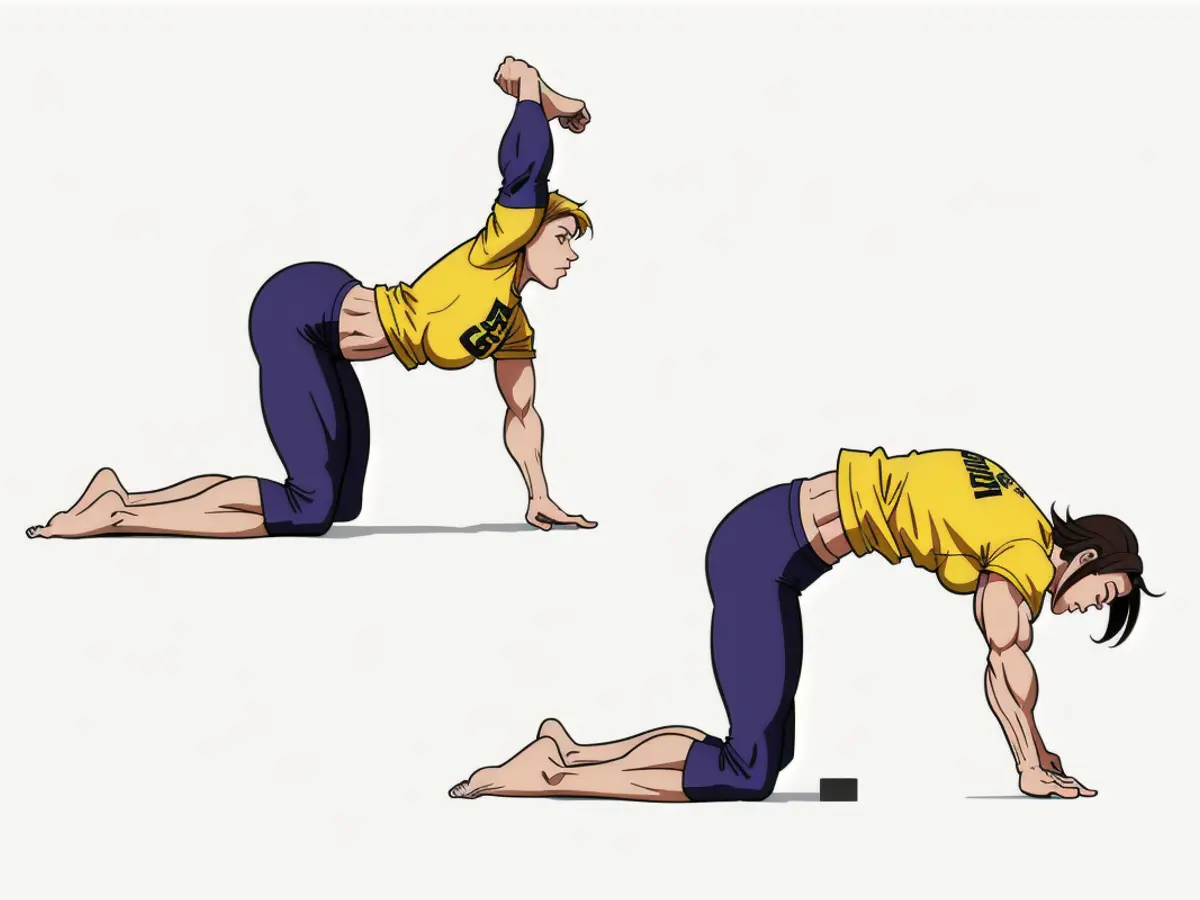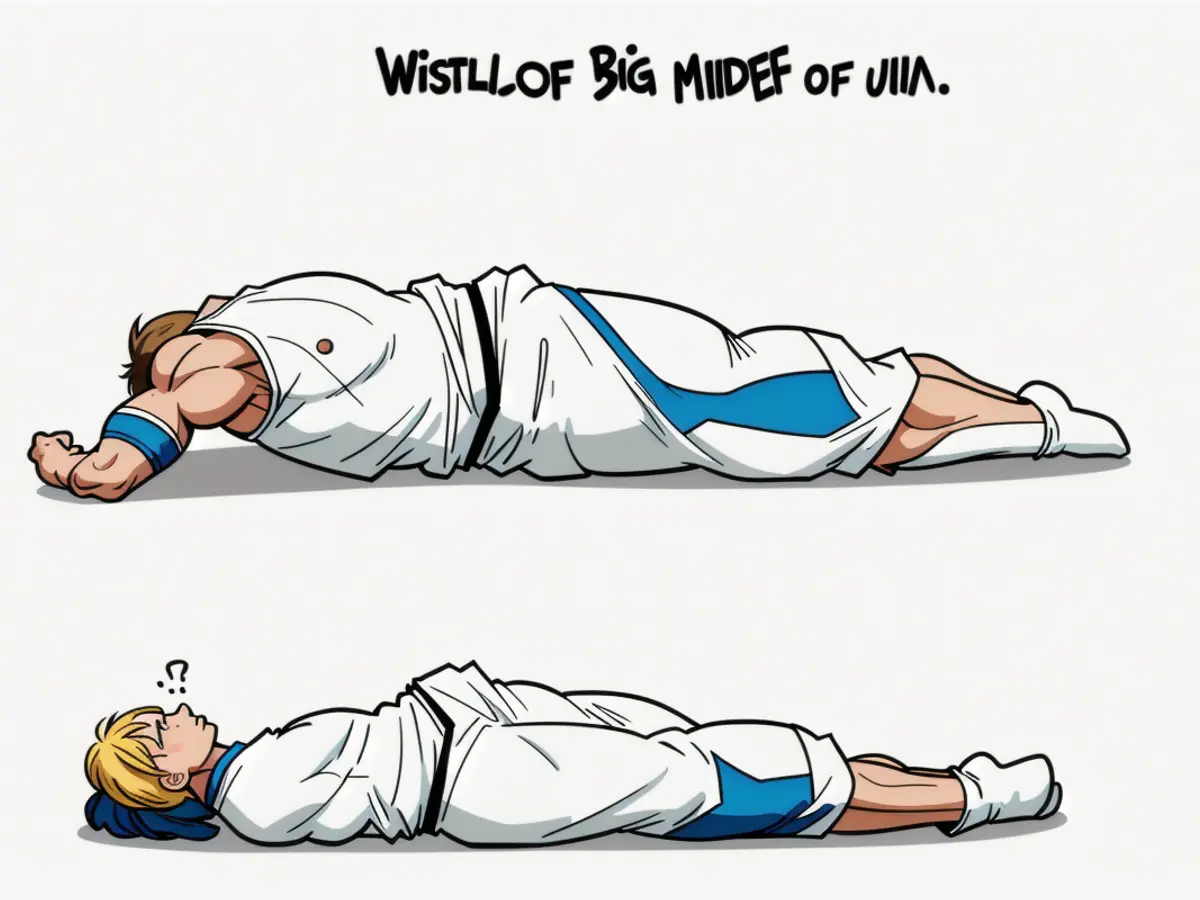Easy Methods to Alleviate Back Ache in the New Year, as Suggested by a Neurosurgeon
New Year often sparks aspirations for significant transformations, but such changes often wane swiftly. Below I offer three practical and tangible methods to reduce back pain, fostering long-term change, enhancing spinal health, and mitigating the likelihood of future surgical procedures.
Your spine, a structural pillar of the human body, offers biomechanical support and shields the spinal cord - a pivotal part of the central nervous system responsible for broadcasting neurological signals from the brain to the rest of the body. Undergoing daily wear and tear, the spine requires meticulous care and maintenance to function optimally.
Cultivate three simple practices.
Exercise correctly, sleep correctly, and optimize your workspace ergonomically.
Adopt SCIENTIFICALLY APPROVED PHYSICAL ACTIVITIES TO ALLEVIATE BACK PAIN
Firstly, maintain overall health by adhering to a balanced diet, regular exercise, and fostering harmony between your mind and body. Consume a diet rich in anti-inflammatory nutrients to enhance overall wellbeing. Prioritize low-impact workouts that strengthen your core muscles, alleviate strain on your spine, and promote proper biomechanical alignment. Your spine's supporting muscles are essential for its stability and function; strengthening these muscles bolsters your spine's structural integrity.

Transition to daily core-focused exercises such as planks, glute bridges, and bird-dog movements. Core exercises fortify your core muscles, boost flexibility, and bolster spinal stability. Be cautious with sit-ups, as they may benefit some yet worsen discomfort for others.
Low-impact cardiovascular activities such as swimming, cycling, and elliptical training maintain fitness whilst sparing excessive pressure on your spine bones and joints. Be mindful that some activities may impose greater stress on your spine, yet these can be pursued based on individual tolerance. Ultimately, listen to your body - do what feels right to remain both active and comfortable.
As a spine surgeon, swimming is my preferred method of cardiovascular exercise. Water reduces weight-bearing stress, enhances mobility, and relieves joint pressure. Whether opting for structured swimming or simply relaxing in a pool, water-based activities can significantly alleviate back pain.
Prioritize FLEXIBILITY TO REDUCE BACK PAIN: CULTIVATE FLEXIBLE SPINE HEALTH
Yoga, Pilates, and morning/evening stretching routines (5-10 minutes) significantly improve spine health. Below are three stretch recommendations from the National Spine Health Foundation:

- KNEE TO CHEST STRETCH: Lie on your back and gently pull your knee towards your chest using both hands for 30 seconds, then switch legs.
- CAT-COW STRTCH: On all fours, inhale as you arch your back and lift your head towards the ceiling. Exhale as you round your spine and tuck your head downward. Repeat at least 10 times.
- CHILD'S POSE: From a hands-and-knees position, sit back on your heels and extend your arms forward, placing your forehead on the floor. This stretch benefits both the back and legs.
CULTIVATE A RESTORATIVE SLEEP POSTURE TO REDUCE BACK PAIN: FOCUS ON SLEEP POSITION
Sleep, a wellness trend for 2025, is crucial for spine health. While quantity matters, the quality of sleep - how you sleep, is equally significant. Proper sleep posture supports natural spinal alignment during rest.
For side sleepers, a smaller pillow underneath their neck can aid alignment. Placing a pillow between their knees reduces lower back stress. Back sleepers may benefit from a pillow beneath their knees to relieve lumbar tension. Stomach sleepers, less common, may consider placing a pillow under their pelvis for additional support, albeit this position may strain their neck.
Listen to your body, and choose a position that allows for restorative sleep. Regardless, aim for eight hours of sleep. Insufficient sleep has been linked to increased pain sensitivity and chronic illnesses.

CHOOSE THE RIGHT MATTRESS FOR BACK PAIN: BALANCE COMFORT AND SUPPORT
Firmer or medium-firm mattresses often provide superior support by evenly distributing body weight, alleviating pressure points. Conversely, soft mattresses may create uneven pressure points, exacerbating spinal discomfort. Ultimately, select a mattress that suits your body's needs.
ERGONOMICS AND YOUR WORKSPACE: REDUCE BACK PAIN
Optimize your workspace to reduce back pain. Prolonged sitting, poor posture, and suboptimal ergonomics contribute to chronic discomfort and micro-strain injuries.
Creating an ergonomic workspace requires balance between comfort and support. Poor ergonomics often arise from two extremes: manual labor or a sedentary lifestyle associated with desk work. Be mindful of your phone use, too, as poor posture may exacerbate discomfort.

There's no one-size-fits-all solution, but there are basic guidelines to adhere to. The key is to maintain control over your phone usage. We're all guilty of it – constantly staring at our phones, which can put pressure on the neck and lower back. I regularly treat pediatric patients with neck pain, and it often stems from heavy backpacks and excessive screen time. Stay aware and deliberate in how you use your phone to minimize strain.
Practical Ergonomic Tips
- Ergonomic Assessment: Position your monitor at eye level, buy a chair with adjustable lumbar support, and make sure your feet rest evenly on the floor.
- Posture Switch-ups: Alternate between sitting and standing using an adjustable desk. Incorporate regular breaks to readjust your posture, as our bodies weren't made for remaining stationary for long periods.
- Device Positioning: Avoid hunching over your phone due to excessive downward gazing, a common cause of "tech neck." Adjust your devices to a comfortable viewing angle or better yet, minimize your screen time.
These simple, conscious adjustments can drastically lessen repetitive strain on your spine, promoting an office environment that fosters long-term spinal health.
Key Takeaways for Lessening Back Pain in 2025
Enduring change comes from daily habits. To reduce back pain:
- Improve your sleeping position
- Establish a workspace with alignment and strain reduction in mind
- Integrate daily exercises that strengthen your core muscles, improve flexibility, and bolster spinal stability.
- Incorporating a balanced workout plan that includes low-impact exercises and core-strengthening activities can significantly alleviate lower back pain and enhance spine health.
- Maintaining proper posture during sleep, such as using a smaller pillow for side sleepers and a pillow beneath the knees for back sleepers, can reduce back pain and promote restorative sleep.
- Selecting a mattress with a balance of comfort and support, either firmer or medium-firm, can evenly distribute body weight and alleviate pressure points, helping to reduce back pain.
- Optimizing your workspace ergonomically by adjusting your monitor height, using an adjustable desk, and taking breaks to readjust your posture can reduce strain on your spine and promote long-term spinal health.
- Addressing "tech neck" by adjusting the position of your devices, reducing screen time, and practicing good posture while using your phone can help minimize strain and discomfort in your neck and lower back.






